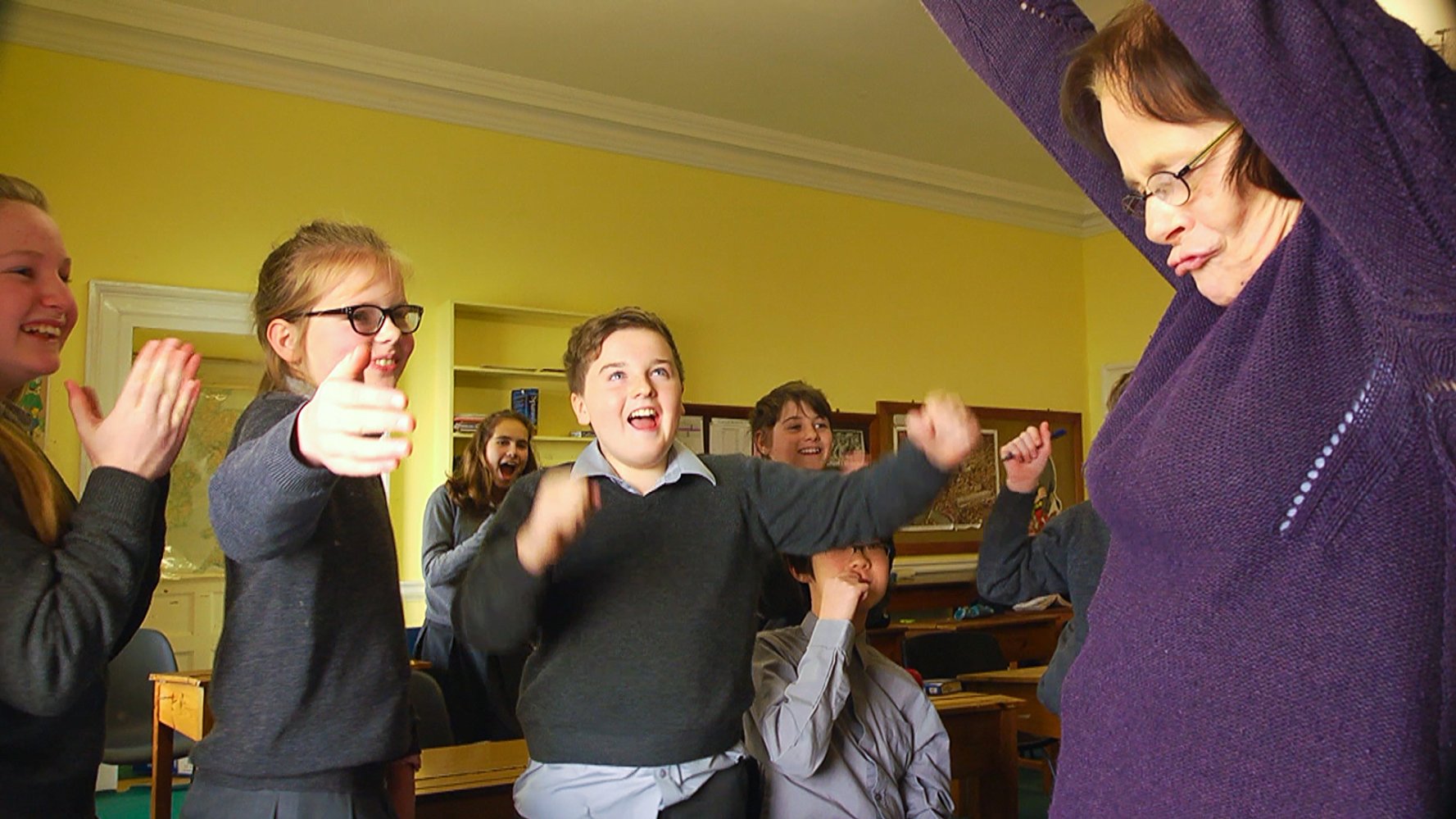
Everybody who got anything out of school has a favorite teacher, a person who drew out hidden qualities that you, in your ignorant youth, didn’t even know were qualities. More often than not, those favorite teachers stood apart from their peers in big ways that may have, at the time, seemed small—they thought creatively rather than just being slaves to that dictatorial beast of education we call pedagogy. And often, they were just a little…odd. They took a chance on us because they believed we could make it in the world, and that belief can make all the difference.
Neasa Ní Chianáin and David Rane’s lovely, pleasingly ramshackle documentary School Life is about people who take that chance day after day and year after year—it comes as easily to them as breathing. John and Amanda Leyden are longtime faculty members at Headfort School, the only primary-age boarding school in Ireland, housed in an 18th-century estate that’s more cheerful than foreboding. It’s a place not quite of this world: The assembly room is lined with ancestral paintings, a gathering of elders in full, satiny skirts and high collars. The classrooms, many of them least a bit untidy (and some very untidy), have a free-for-all hippie vibe—they seem to have changed little since the 1970s.
John and Amanda were married in the early years of that decade and have been teaching at Headfort for about as long as they’ve been wed, some 45 years. School Life tracks Headfort’s students and teachers through one school year, but John and Amanda emerge as the picture’s quietly dazzling stars: Amanda teaches English, and her method of getting her students excited about reading isn’t to tell them how wonderful it is—instead, she takes that wonder as a given, working on the assumption that they’ll love as much as she does once they give it a chance, though she’s also exceedingly patient in helping them through any rough patches they may encounter. (One of her projects is to direct them in an adapted version of Hamlet, giving special encouragement to the sweet, dyslexic kid who’s been cast as the ghost.) John teaches Latin, math, religion and music, and it seems the last is the hardest: He tries to assemble a workable rock band from the enthusiastic but unfocused students, though they’re almost always off the beat and out of tune. His mode of watchful neglect suggests that he’s seen the same thing year after year, and he knows that the best way forward is just to let them bang it out.
John and Amanda, who live in a small, cheerfully disorganized house on the school grounds, a place with jumbles of books on the shelves and random mugs of tea sitting about, are eccentrics in the best sense, and Chianáin and Rane just get it: While all of the school’s teachers are clearly devoted to the students’ welfare, John and Amanda’s seemingly freewheeling approach to education, coupled with their obvious affection for the students, stands out. They seem to do the most teaching, and the best teaching, by engaging in a very focused and deliberate type of nonteaching, a mode they seem to have perfected over the years without knowing they’ve perfected it. As Amanda, wearing her trademark uniform of longish skirt, flat walking shoes and cheerful-looking sweater, watches the students file in on the semester’s first day—they make their way from the grounds to the doors in unruly, chattering packs—she says joyously to no one in particular, “I love them!” And as the months go by, John keeps an eye on one girl who observes everything but barely speaks. “I don’t want her to live a life where she stands five yards back from what everybody else is doing,” he tells his wife in one of the couple’s many at-home discussions. (It’s impossible for them to leave their work behind at the end of the school day.) “She’s got such a lot to offer—she’s very clever.”
School Life is a bit woolly in its pacing, but the picture’s easygoing structure is part of its charm—it mimics, perhaps, the passage of time at Headfort itself. The minutes we spend watching the movie fly by like the seasons: We see students fighting homesickness (one night, an administrator calms one distressed young newcomer by telling him it will be only “eight sleeps” before he sees his mother again) and squabbling over the “fort” they’ve built on the school’s tree-dotted grounds. And we see the older ones getting ready to leave a place they’ve come to love. But mostly, we see John and Amanda teaching by not-teaching. And we the school, after our brief time there, realizing that we’ve learned something too.
More Must-Reads from TIME
- Why Trump’s Message Worked on Latino Men
- What Trump’s Win Could Mean for Housing
- The 100 Must-Read Books of 2024
- Sleep Doctors Share the 1 Tip That’s Changed Their Lives
- Column: Let’s Bring Back Romance
- What It’s Like to Have Long COVID As a Kid
- FX’s Say Nothing Is the Must-Watch Political Thriller of 2024
- Merle Bombardieri Is Helping People Make the Baby Decision
Contact us at letters@time.com